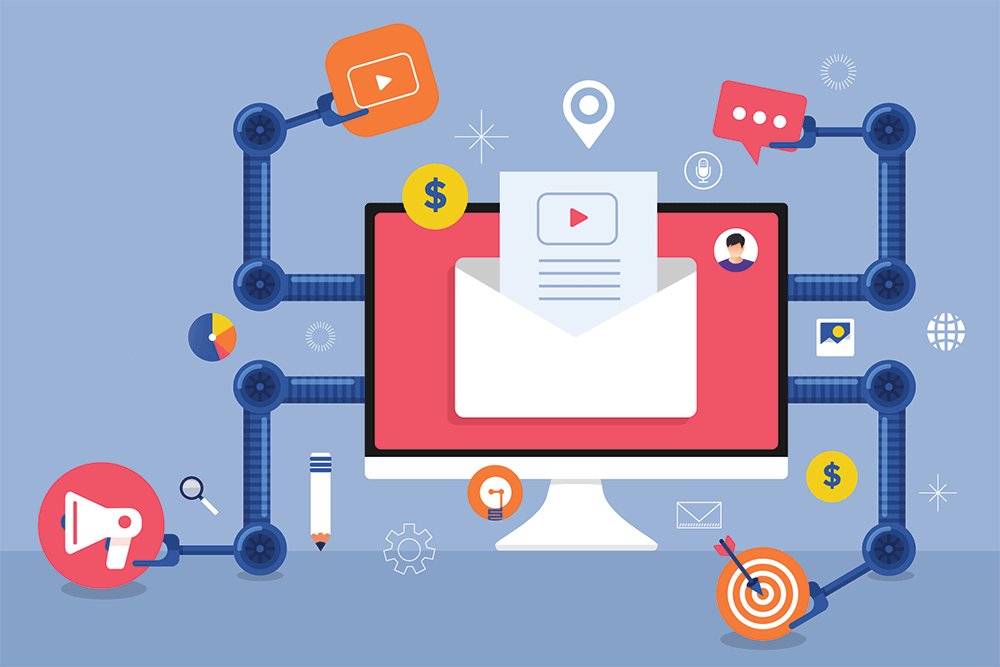Freelancers are saved because of invoicing. Every freelancer is bound to have polished invoicing skills because there are two major problems faced by freelancers at present. Either they don’t receive the correct payment or they don’t receive the payment on scheduled time. Surely both sucks and if you happen to be a freelancer and want to prevent any of the problems happening to you, here is how to write an invoice for freelance work.
One of the most commonly asked questions concerning invoices has always been how to write an invoice. Let’s get started with the basics before we learn how to write an invoice for services.
Why do freelancers need to know how to write an invoice?
One of the main reasons why freelancers should focus on invoicing because it helps in keeping a track of all the projects done with various clients and provides convenience in the long run by managing tax fillings. In simpler words, invoicing is the professional record-keeping of all your finances as a freelancer. It helps your image look more professional and helps you to maintain the crucial data conveniently in lesser time.
Say, for example, you have been a freelancer for the past couple of years. At any given time if you are required to find any specific project by a given date or year, having an invoice will be a blessing. You are cutting time and wasted labor by just going through the invoices of all your past projects instead of going through your past work through emails. Not only is that time-consuming but also chaotic and will surely give you a headache.
What is invoicing?
Technically speaking, invoicing is a piece of document which is time and date stamped and is used commercially to keep the records of every purchase ever made by clients from the concerned party. The concerned party can be both an individual such as a freelancer or a corporate business. Invoices usually have the terms and conditions of the products and services availed by customers or clients along with the various methods by which the corresponding payment can be done.
For freelancers, an invoice is important because it helps them to keep proper records of all the services they provide for different clients regularly. Not only do they make managing work easier for them, but also make you look professional and highlight your expert knowledge in your niche. For these reasons, it is crucial that find out how to write an invoice for freelance work.
The types of invoices
According to a variety of businesses and clients, invoices have six different types. Before we shift to how to write an invoice, freelancers must know the different types of invoices to understand which would be the right fit for them and their services.
The pro forma invoice contains the specifications of the project including the payment amount and deadline. But this invoice doesn’t demand payment neither provides the clients with different methods of making a payment.
The interim invoices are written for big projects which require a longer period of completion thus the payments are demanded in instalments. This invoice helps freelancers to maintain cash flow even if the project requires a long duration of time to get completed. Often, the payments are used to cover the service charges among others.
Recurring invoices are used to renew the purchase of products or sales. Some businesses use this invoice for the renewal of subscriptions or memberships.
The past due invoice is for those clients and customers who haven’t yet made the payment neither have responded to the prior sent invoice. In such cases, freelancers ask their clients to settle the payment through this invoice.
The miscellaneous invoice is sent to clients to ask for payment to cover the cost for mere things when providing services.
Last but not the least, the final invoice is sent to clients and customers to make them aware of the fact that the project has been completed and they can make the payment through any of the different modes of payment mentioned in the same invoice.

The elements of an invoice
Before we shift on how to write an invoice for freelance work or how to write an invoice for services, one must know the different elements present in a general invoice.
First and foremost, before mentioning the products and services availed by a client, make sure you have mentioned your company’s name and logo. This is your identification. Even though you are a freelancer, you must have a number for your brand and a logo to make an impression on the internet. The name and logo would help clients to identify you faster.
How to write an invoice: contact details
The next thing is contact details. How will the client make contact for your services? Not many realize this but have options in contact details makes your invoice look more reachable. Start by your email address, phone number (provide two if you happen to have one), and your address. Make sure you double-check when you fill in contact details so that the client can communicate with you if there’s any problem.
Make sure you match the client and their corresponding products and services availed from you. If you want to avoid any unnecessary delay in the payment, do double-check the client details. It might take up some more of your time, but it will make your invoice foolproof.
How to write an invoice: the importance of unique invoice number
The next step calls for the date and the invoice number. The invoice number is very essential because that number is going to help you and your client to make references in the future. The invoice number is going to help you in managing the paperwork. When you are learning how to write an invoice for freelance work, always remember no two of the invoice number would be the same. Every purchase of products or services is called for an invoice with a unique invoice number.
While arranging your invoices, you can do it year-wise, it not only looks neater but the stacks would also be more manageable. But if you want, you can also keep the invoices according to project names or by the number of clients who have provided your products and services too. The key is here is to stick to whichever system you feel more comfortable with.
The importance of project brief
The next element which you should know before you learn how to write an invoice is the project brief and amount as payment. Project brief can include the name and details of the project, products, or even services provided by you and the payment amount would obviously have the final amount that needs to be paid by the corresponding client.
If you happen to be a freelancer, then always remember to be specific with the project brief. Break down the different contents, for example, don’t write miscellaneous in place of service cost. Make sure you put worth in your services otherwise the client won’t. When sending an invoice, you have to make sure your client is aware of the different parts of the project to understand the set amount as payment.
Many freelancers wonder how to write an invoice for freelance work, but don’t emphasize the importance of providing a detailed project brief to the client. The client must know which costs what and whether the payment would be done on an hourly basis or on the amount of work done. To sum up, the entire brief, mention the entire amount that is due for payment.
Due date, payment options and penalties
Another thing to remember is when learning how to write an invoice is the importance of deadline. Mention the deadlines of both the project and payment. It is advised that you communicate with your client regarding the payment options. Freelancers should keep multiple payment options open to prevent any delay of payment. Be aware of the transfer and conversion fees and remember to mention these details to the client.
Please note that when you are focussing on how to write an invoice for your freelance service, you have to set a policy for late payments and missed deadlines, i.e. what will happen when a client misses deadlines. Highlight the policy and the amount you will charge as interest if there is any delay from the client’s side. You can even send a second invoice reminding them of your pending payment through a past due invoice.

How to write an invoice for freelance work
Here are the compulsory data that one must include when learning how to write an invoice.
Details of the invoicing party
Here you have to mention the Name and address of your company. You can place this information at the bottom of the invoice document.
Details of the recipient party
In this section, the details of your clients have to be included. The number and address are primarily the content of any invoice. This information can be typed at the top left corner of the invoice.
Unique client and invoice number
These are one of the most crucial pieces of information in an invoice. It separates every invoice from one another. The unique client and invoice number can be typed on the right side below the recipient party data.
Date and time of the invoice
Mention the word INVOICE in capitals and bold to highlight the purpose of the piece of document. You can directly write the date and time just below the unique customer and invoice numbers.
Project brief
You must insert a detailed project brief of the products and services that the corresponding client has availed from you. The body of the invoice document will contain the project brief along with the individual prices and quantities of the products and services availed.
- The total amount before any taxes is added to the purchase.
- The total amount after the taxes is included with the purchase.
- Deduct any amount if any discounts or offers are applicable.
- The final amount needs to be paid by the client.
You can add the entire section of the amount total below the project brief, one after the other. You can even highlight the final amount for the client to recognize it faster.
You have to mention the terms and conditions of the payment in the invoice document. You can so by mentioning below the final amount. Highlight the subheading (payment terms or terms and conditions of payment) and list down the different terms.
Your invoice then has to have the different modes of payment available at your company. You can list them down for better comprehension and honestly, it looks a lot more professional and neat.
Last but not the least, you can show your gratitude by adding a thank you and a personal note of how grateful you are for the services that were availed by the corresponding client from you.
Why you should know how to write an invoice for freelance work?
Not only it provides a professional look and easy record keeping of all your sales, but it also provides you with the extra security of your products and services. It makes the entire process of filing taxes very easy. When you are learning how to write an invoice, you are also learning the effective and easier trick to file taxes more conveniently. If you’re starting out, crafting a basic invoice in Word or Excel might suffice.
If you happen to be a freelancer for a long time, then invoicing will help you in organizing your sales faster.
Always write an invoice to get the value for your service. Even if it’s a friendly deal, put your service above everything. you can also purchase online invoicing software to get the best of the invoices, they are fast, easy, and very effective. If you thinking to purchase invoice software, then you can sign up for a free Billdu trial and find out why it is one of the best invoicing software platforms available in the current market.




